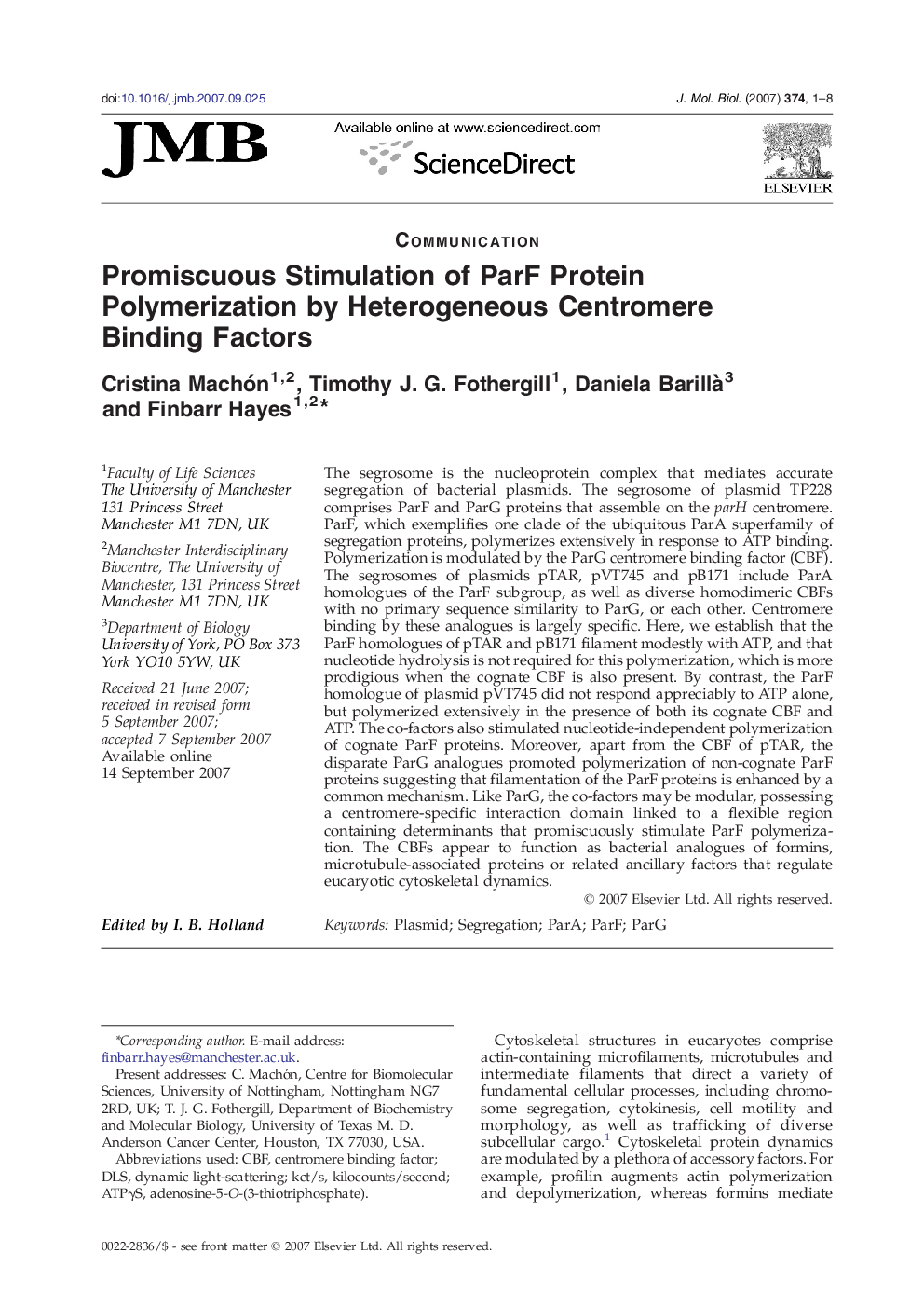| Article ID | Journal | Published Year | Pages | File Type |
|---|---|---|---|---|
| 2187796 | Journal of Molecular Biology | 2007 | 8 Pages |
The segrosome is the nucleoprotein complex that mediates accurate segregation of bacterial plasmids. The segrosome of plasmid TP228 comprises ParF and ParG proteins that assemble on the parH centromere. ParF, which exemplifies one clade of the ubiquitous ParA superfamily of segregation proteins, polymerizes extensively in response to ATP binding. Polymerization is modulated by the ParG centromere binding factor (CBF). The segrosomes of plasmids pTAR, pVT745 and pB171 include ParA homologues of the ParF subgroup, as well as diverse homodimeric CBFs with no primary sequence similarity to ParG, or each other. Centromere binding by these analogues is largely specific. Here, we establish that the ParF homologues of pTAR and pB171 filament modestly with ATP, and that nucleotide hydrolysis is not required for this polymerization, which is more prodigious when the cognate CBF is also present. By contrast, the ParF homologue of plasmid pVT745 did not respond appreciably to ATP alone, but polymerized extensively in the presence of both its cognate CBF and ATP. The co-factors also stimulated nucleotide-independent polymerization of cognate ParF proteins. Moreover, apart from the CBF of pTAR, the disparate ParG analogues promoted polymerization of non-cognate ParF proteins suggesting that filamentation of the ParF proteins is enhanced by a common mechanism. Like ParG, the co-factors may be modular, possessing a centromere-specific interaction domain linked to a flexible region containing determinants that promiscuously stimulate ParF polymerization. The CBFs appear to function as bacterial analogues of formins, microtubule-associated proteins or related ancillary factors that regulate eucaryotic cytoskeletal dynamics.
